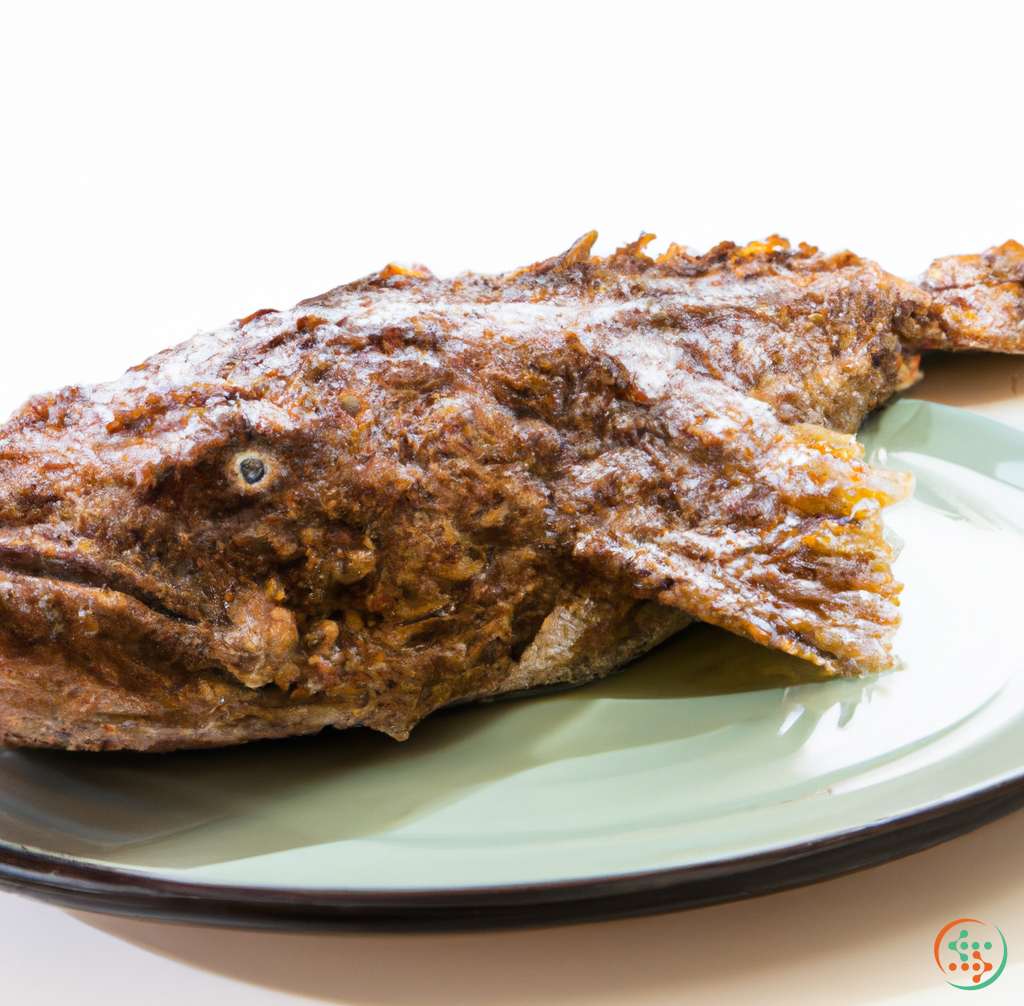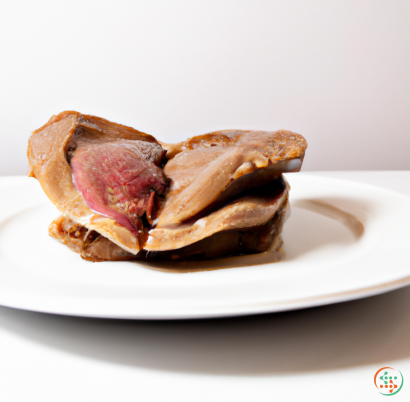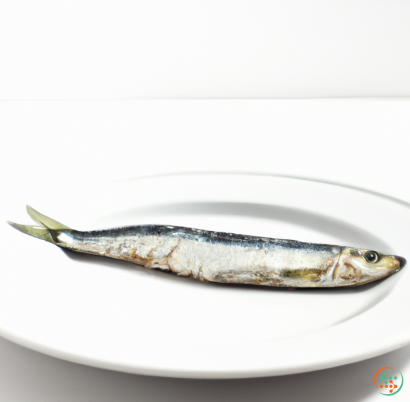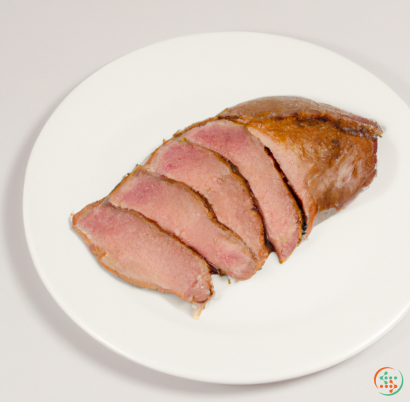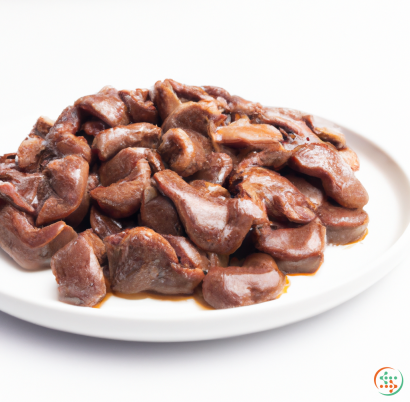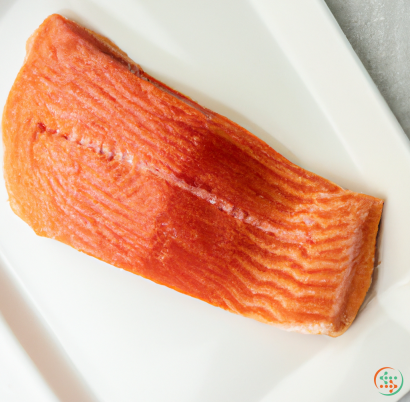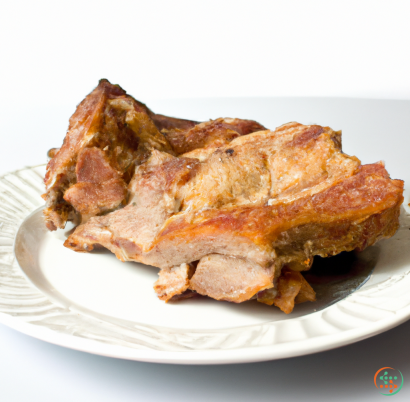Wolffish
The Wolffish, more commonly known as the sea wolf, is a large, impressive-looking fish that is found in the cold, deep waters of the North Atlantic and Arctic Oceans. The wolffish is admired for its wide range of unique characteristics, including its stout, armored body, prominent teeth, and distinct locomotion. Unusual among other fish species, the wolffish has evolved special adaptations that make it a successful member of the marine community.
The wolffish, scientifically referred to as Anarhichadidae, belong to the family of perciform fishes. They range in size from 2 to 4 feet in length, but the largest of these predatory fish have reached lengths up to 5 feet and have been known to weigh up to 40 pounds. A wolffish’s most notable feature is its thick, armor-like skin, which is composed of hard, overlapping scales that act like a layer of armor-plating, thereby making it difficult for potential predators to take a bite out of. Its physical properties also include a flattened head, which usually measures one third of the total body length and is equipped with several rows of sharp teeth, with the canines extending beyond the others. The wolffish swims side-to-side by undulating its long dorsal and anal fins, allowing it to move quite rapidly.
The diet of the wolffish includes a variety of mollusks, crustaceans, echinoderms, and even some small fish. These fish are ambush predators and typically spend their days in dark underwater crevices and gullies where they can hide and wait for their prey. This species often hunts alone in pairs and is disposed to scavenging carcasses when food is scarce. Its teeth and superior biting power help them to breakdown food, clams, and even crack crab shells.
The wolffish is a long-lived species, capable of reaching up to 20 years of age. Breeding occurs once a year, usually during the spring. Once the female wolffish has laid her eggs, males take over the role of protecting them by building nests and then guarding them until they hatch. After they hatch, they remain in the nest until they become independent. Upon reaching sexual maturity, at around 4 or 5 years of age, the wolffish starts the breeding cycle all over again.
In the days of old, the wolffish was a heavily fished species by native people living in Iceland, Norway, and Lapland, who valued it for its meat, oil, and other biological materials. In recent years, its populations have suffered due to overfishing and its slow growth rate. Wolffish are now listed by the International Union for the Conservation of Nature and Natural Resources as Near Threatened, raising their priority even higher. The decline of this species is concerning, since its importance to the marine environment is considerable. It is a keystone species, meaning that it plays an important role in maintaining its marine ecosystem. Wolffish feed on organisms that clean the seafloor, ensuring stable ecosystem functioning. As these fish decline in population, the risk of contaminating its marine environment becomes higher.
In sum, the wolffish is a unique species, highly recognizable by its armor-like scales and intimidating teeth. Its ability to live in the cold, deep waters of the North Atlantic and Arctic Oceans has allowed it to thrive and create an important niche in the marine community. Sadly, its population has been rapidly decreasing due to overfishing, prompting the IUCN to give it a higher priority on the conservation list. Its decline affects other species as well, as it plays an essential role as a keystone predator. All efforts must be made to ensure its well-being, as its absence would be a tremendous loss in the marine environment.
Wolffish: From Upstream Waters to the Dinner Plate
The Wolffish (Anarhichas lupus) is a deep-sea predator found in the north Atlantic and Arctic ocean, and occasionally in the Baltic Sea. A long and slender fish, the Wolffish features a large head and strong jaws equipped with prominent canine teeth — giving rise to its common name. This unique looking fish also has some unique characteristics; for example, their large eyes help them spot potential prey in their deep, dark habitat, while their smooth skin provides protection from parasites. With a choice selection of firm white meat, the Wolffish is an increasingly popular target among fisherman and chefs alike. But what is the story behind the Wolffish’s journey from upstream waters to the dinner plate?
Spawning and Early Life
During the summer spawning season, female Wolffish release their eggs into the sea where they are fertilized by the male. These eggs are semi-buoyant and drift in the upper water column where they remain suspended until they hatch — typically taking between 25-30 days. Once hatched, the Wolffish larvae remain in the upper layers of the water column where they feed on plankton and other tiny prey which have also developed from the previous year's spawning activity.
When the Wolffish reaches a juvenile age of about 4-5 months, it begins to migrate downward into the deep water along the continental slope where visibility and prey abundance are both greater. For the next few years, these juvenile Wolffish feed voraciously on an assortment of invertebrates such as crabs, octopus, squid, cuttlefish, and various fish, while they continue to grow and develop into mature adults.
Mature Wolffish
At the age of around 3-4 years, the Wolffish has reached its full maturity and will now weigh approximately 3-4 kilograms. These mature fish transition to a wide variety of habitats across their native range, but generally remain in relatively deep water (around 200 meters or more) where they feed on a variety of natural prey, including other fish and crabs. Some mature Wolffish even consume sea stars and mollusks, ensuring that they have an adequate and diverse diet.
Living in relative obscurity in the deep waters of the Atlantic and Arctic oceans, the Wolffish lives out its life largely untouched by humans, but fishers seeking to tap into their succulent white meat occasionally target these fish during their spawning runs into shore.
Harvest and Processing
When fishers seek out the Wolffish, they use techniques that are largely dependent on the type of area in which they are fishing. In some areas, trawling is the predominant method used, though either trolling with lures or jigging with baited hooks is also common. The fish are then processed aboard, with the fillets being quickly cured in salt before being packed in ice and shipped to local markets.
In order to ensure that their harvest meets the quality expectations of their customers, fishers take special care in handling the Wolffish after capture. This includes taking the time to carefully fillet and skin the fish, as well as paying attention to proper food safety procedures to prevent spoilage and contamination.
Once the fish is processed, it can be delivered to markets that specialize in seafood, such as supermarkets and fishmongers. There, the fillets can be sold fresh or frozen for a variety of uses, ranging from stews and salads to sandwiches and sushi.
Food Quality and Nutrition
The Wolffish is recognized as having high-quality white meat. It has a texture similar to that of cod, though its flavor is more pronounced. In addition to its taste, the Wolffish contains an abundance of essential oils and fatty acids which make it particularly nutritious. As a result, it is an excellent source of vitamins A, B12 and E, as well as a variety of minerals such as phosphorus, calcium and magnesium.
Conclusion
The Wolffish is an interesting fish with a fascinating life cycle and an increasingly popular culinary option. From its summer spawning season to its filleting process at sea, the Wolffish’s journey from upstream waters to the dinner plate is a complex one, but the result is a succulent and nutritious seafood delicacy that is sure to please any seafood enthusiast.
| Vitamin A | 0.13 mg | |
| Vitamin B1 | 0.21 mg | |
| Vitamin B2 | 0.1 mg | |
| Vitamin B3 | 0.0026 grams | |
| Vitamin B5 | 0.66 mg | |
| Vitamin B6 | 0.46 mg | |
| Vitamin B9 | 0.006 mg | |
| Vitamin B12 | 0.00235 mg |
| Calcium | 0.008 grams |
Daily Value 1.3 g
|
| Iron | 0.12 mg |
Daily Value 0.018 g
|
| Magnesium | 0.038 grams |
Daily Value 0.4 g
|
| Phosphorus | 0.256 grams |
Daily Value 1.25 g
|
| Potassium | 0.385 grams |
Daily Value 4.7 g
|
| Sodium | 0.109 grams |
Daily Value 2.3 g
|
| Zinc | 0.001 grams |
Daily Value 0.011 g
|
| Copper | 0.04 mg |
Daily Value 0.9 mg
|
| Manganese | 0.02 mg |
Daily Value 0.0023 g
|
| Selenium | 0.0468 mg |
Daily Value 0.055 mg
|
| Tryptophan | 0.251 grams | |
| Threonine | 0.984 grams | |
| Isoleucine | 1.034 grams | |
| Leucine | 1.824 grams | |
| Lysine | 2.061 grams | |
| Methionine | 0.664 grams | |
| Cystine | 0.241 grams | |
| Phenylalanine | 0.876 grams | |
| Tyrosine | 0.757 grams | |
| Valine | 1.156 grams | |
| Arginine | 1.343 grams | |
| Histidine | 0.661 grams | |
| Alanine | 1.357 grams | |
| Aspartic Acid | 2.297 grams | |
| Glutamic Acid | 3.349 grams | |
| Glycine | 1.077 grams | |
| Proline | 0.793 grams | |
| Serine | 0.915 grams |
| Total Sugars | 0.131141 grams |
per 100g
|
| Myristic acid (14:0) | 0.09 grams |
|
| Palmitic acid (16:0) | 0.32 grams |
|
| Stearic acid (18:0) | 0.06 grams |
|
| Total Saturated fatty acids: | 0.47 g | |
| Erucic acid (22:1) | 0.02 grams |
|
| Oleic acid (18:1) | 0.66 grams |
|
| Palmitoleic acid (16:1) | 0.24 grams |
|
| Gadoleic acid (20:1) | 0.15 grams |
|
| Total Monounsaturated fatty acids: | 1.07 g | |
| Omega-3 Timnodonic acid (20:5) | 0.39 grams |
|
| Omega-3 Clupanodonic acid (22:5) | 0.06 grams |
|
| Linolenic acid (18:3) | 0.01 grams |
|
| Linoleic acid (18:2) | 0.03 grams |
|
| Total Polyunsaturated fatty acids: | 0.49 g | |
| Cholesterol | 0.06 grams |
|
| Total Sterols: | 0.06 g | |
